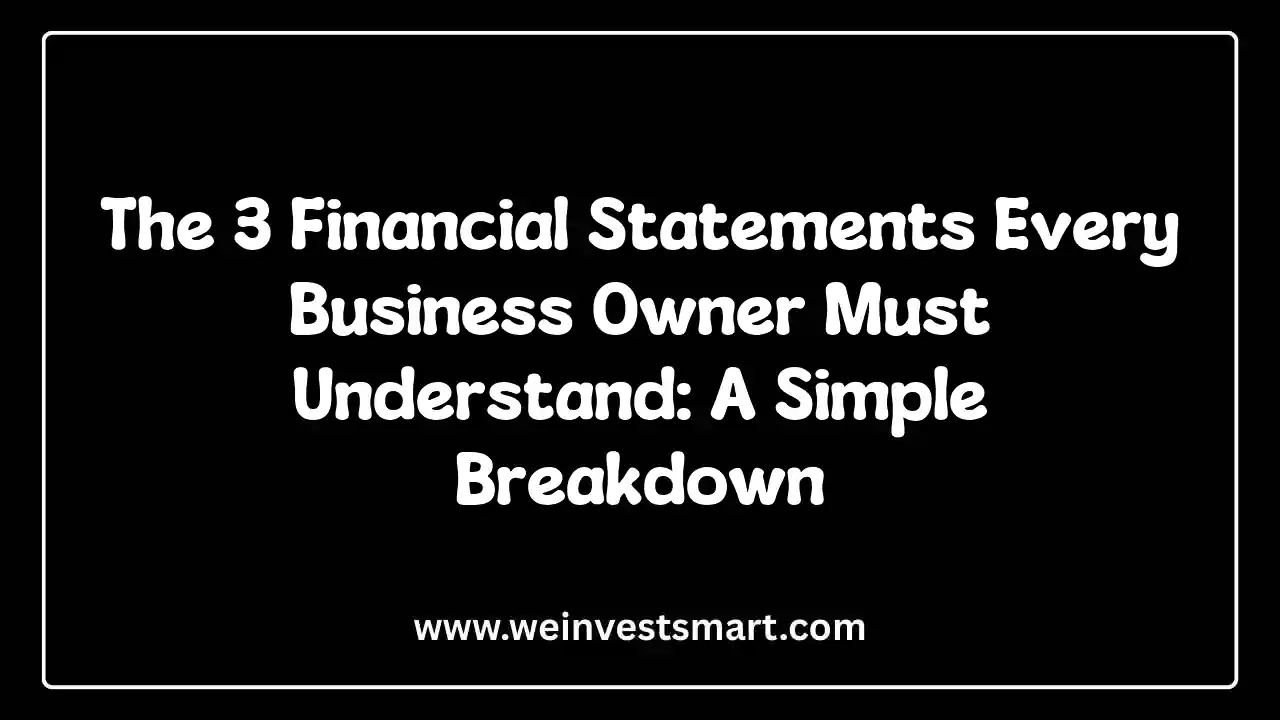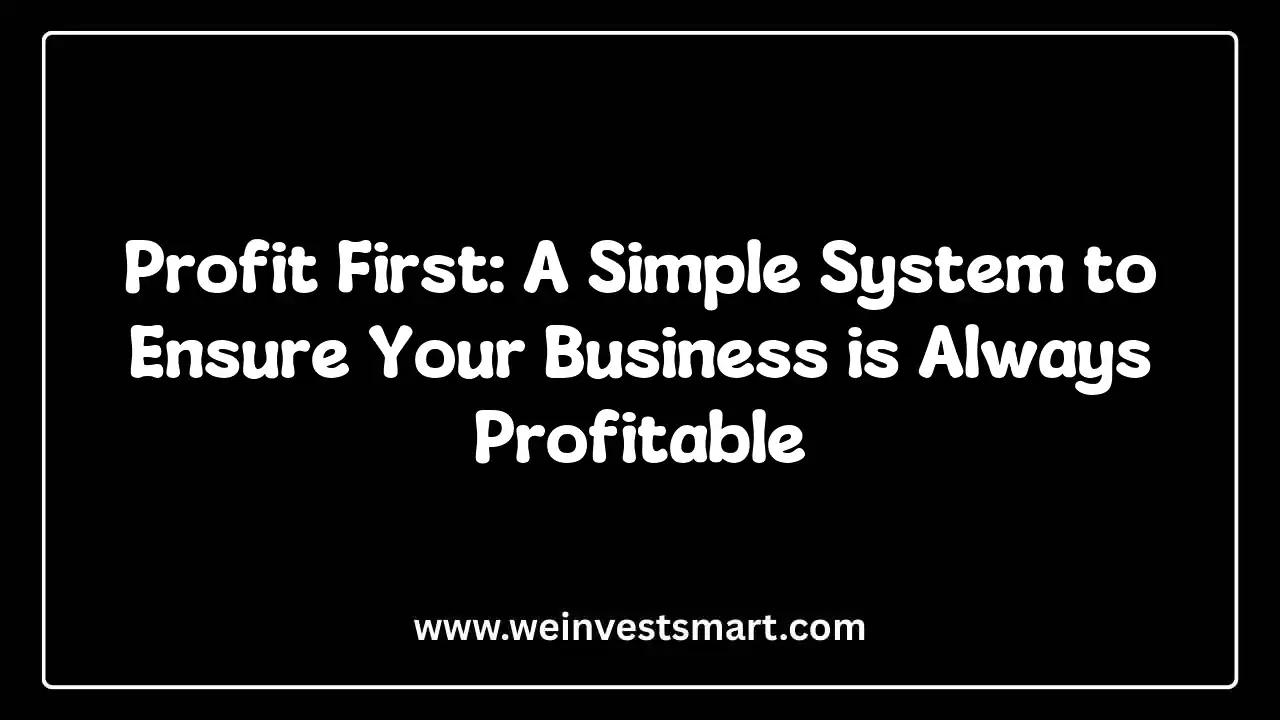· WeInvestSmart Team · business-finance · 11 min read
How to Price Your Services: A Guide for Freelancers and Consultants
Move beyond just "charging by the hour." This guide demystifies different pricing models like project-based, value-based, and retainers, and shows you how to calculate a rate that is truly profitable.
Most freelancers are trapped in a pricing model that actively punishes them for being good at their job. Here’s the uncomfortable truth: if you are charging by the hour, you are selling your time, and time is a finite commodity. Every time you get faster, more efficient, or more skilled, you actually reduce your income on a given task. Going straight to the point, billing by the hour creates an absurd standard where your reward for expertise is to work fewer hours and therefore make less money. It’s a race to the bottom, and it’s the single biggest barrier to building a truly profitable service business.
We’ve all heard the advice to “charge what you’re worth,” but what does that even mean? For many, it feels like pulling a number out of thin air, a high-stakes guessing game where you’re terrified of either scaring the client away or cheating yourself. So we retreat to the false safety of the hourly rate because it feels tangible and easy to justify.
But what if we told you that your price isn’t just a number? What if it’s a strategic tool that signals your value, filters your clients, and dictates the very nature of your work? Here’s where things get interesting. Moving beyond the hourly trap to models like project-based, value-based, and retainer pricing isn’t just about making more money. It’s about fundamentally changing the conversation with your clients. And this is just a very long way of saying you need to stop selling your hours and start selling outcomes.
The Hourly Rate Trap: Why Your Default Setting Is Broken
Before we can build a better model, we have to dismantle the old one. Why is charging by the hour so problematic? The problem isn’t just that it limits your income; it’s that it misaligns your incentives with your client’s. When you bill by the hour, the client’s primary concern becomes, “How long is this taking?” not “What is the quality of the result?” You are incentivized to take longer, and they are incentivized to rush you. This creates an inherent conflict from day one.
Going straight to the point, hourly billing turns your expertise into a low-value commodity. It puts you in the same category as a temp worker, where the focus is on time logged, not value created. It invites micromanagement, requires tedious time-tracking, and makes clients nervous about fluctuating, unpredictable costs. This is a recipe for friction and resentment on both sides.
The funny thing is that we cling to this broken model out of fear. We’re afraid to put a fixed price on a project because we might underestimate the effort and lose money. While that risk is real, it’s a problem of scoping, not a flaw in the pricing model itself. The “safety” of hourly billing is an illusion that keeps freelancers overworked and underpaid. The goal is to escape this trap and anchor your price to the one thing that truly matters: the value you deliver.
A Better Way: Exploring Modern Pricing Models
So, what do we do? We need to shift our thinking from inputs (hours worked) to outputs (results delivered). This is where sophisticated pricing models come into play. Each one serves a different purpose and is suited for different types of work, but they all share one common goal: to decouple your income from the time clock.
Model 1: Project-Based Pricing (Fixed-Fee)
This is the first and most logical step away from hourly billing. With project-based pricing, you provide a single, flat fee for a project with a clearly defined scope and deliverables. A client needs a new five-page website? You charge a fixed price of $5,000, regardless of whether it takes you 20 hours or 50 hours.
Here’s where things get interesting: this model immediately aligns your incentives with the client’s. Both of you are now focused on the same thing: completing the project efficiently and effectively. In fact, it rewards you for your expertise. If your years of experience allow you to deliver that $5,000 website in half the time of a less-experienced developer, you’ve just doubled your effective hourly rate. The client is happy because they have a predictable, fixed cost, and you are happy because your efficiency is a financial asset, not a liability.
Of course, the risk shifts to you. If you miscalculate the project’s complexity, you could end up working for far less than you intended. This is why a rock-solid contract with an ironclad scope of work is non-negotiable. Any work requested outside of that scope (“scope creep”) must trigger a change order with an additional fee.
- Best for: Clearly defined projects with predictable deliverables, like logo design, website development, or writing a series of articles.
Model 2: Value-Based Pricing
This is the holy grail of pricing for consultants and high-impact freelancers. Value-based pricing takes the focus off your effort entirely and bases your fee on the value and return on investment (ROI) you create for your client. This sounds like a trade-off, but it’s actually the most client-centric approach possible. It forces you to ask the most important question: “What is this outcome actually worth to my client’s business?”
To understand this, we need to go to the heart of the problem, which most people don’t know: clients don’t buy your services; they buy a transformation. They don’t want a “social media strategy”; they want “more leads that turn into sales.” Going straight to the point, value-based pricing quantifies that transformation. For example, if you can demonstrate that your sales funnel optimization will likely increase their annual revenue by $200,000, charging $20,000 for the project is no longer an expense in their mind—it’s an investment with a 10x return.
Implementing this model requires a deep understanding of your client’s business and the confidence to have frank conversations about their goals and financials. You need to be able to quantify the “before” and project the “after.” A common rule of thumb is to price your service at around 10% of the value you create, ensuring the client receives a significant ROI.
- Best for: High-impact consulting, strategic work, and services that directly influence a client’s revenue or cost savings, such as marketing campaigns, conversion rate optimization, or business process automation.
Model 3: Retainer Agreements
A retainer is an agreement where a client pays you a fixed fee in advance to secure your services for a set period, typically monthly. This model is the key to creating predictable, recurring revenue in a service business, transforming your finances from a roller-coaster of project-based income to a stable, reliable cash flow.
There are two primary types of retainers:
- Pay-for-Work Retainers: This is the most common type. The client pays a monthly fee for a pre-defined block of work or set of deliverables. For example, a content marketer might be on a $3,000/month retainer to deliver four blog posts, one newsletter, and manage social media channels. This is perfect for ongoing, predictable work.
- Pay-for-Access Retainers: This model is typically used by highly experienced consultants and experts. Here, the client isn’t paying for specific deliverables but for access to your strategic advice, expertise, and guidance on-demand. They are paying to have you “on call” to help them solve problems as they arise. This model is purely about the value of your knowledge, completely divorced from hours worked.
Retainers are a win-win. You get financial stability, and the client gets a dedicated partner who is deeply integrated into their business.
- Best for: Ongoing client relationships, maintenance work (like website management), and providing continuous strategic advice.
The Practical Part: How to Actually Calculate Your Rate
Alright, enough theory. But what do we do when it’s time to actually put a number on the proposal? And here is where things get interesting. Your price is not just one number; it’s a calculation that starts with your needs and ends with the client’s value.
Step 1: Calculate Your Baseline Survival Number
Before you can think about value, you must know what it costs to run your life and your business. This is your absolute minimum, your floor price.
- Add Up Your Personal Expenses: What do you need to earn annually to cover your rent/mortgage, utilities, groceries, insurance, and personal savings goals? Let’s say this is $60,000.
- Add Up Your Business Expenses: Tally up everything you spend annually to run your business: software subscriptions, laptop, internet, marketing, accounting fees, etc. Let’s say this is $10,000.
- Factor in Taxes: As a freelancer, you have to pay your own taxes. A safe estimate is to set aside 30% of your total desired income. So, ($60,000 + $10,000) * 0.30 = $21,000.
- Your Total Annual Target: $60,000 + $10,000 + $21,000 = $91,000. This is the minimum you need to earn to stay in business.
Step 2: Determine Your Billable Hours
You don’t work 52 weeks a year, and not every hour you work is billable. You have to account for vacations, sick days, marketing, and administrative tasks.
- Total weeks in a year: 52
- Subtract vacation (3 weeks) and holidays/sick days (2 weeks) = 47 work weeks.
- Assume you work 40 hours a week: 47 weeks * 40 hours/week = 1,880 total work hours.
- But only about 60-75% of your time is billable. Let’s use 65%. 1,880 * 0.65 = 1,222 billable hours per year.
Step 3: Calculate Your Baseline Hourly Rate
Now, simply divide your target income by your billable hours.
- $91,000 / 1,222 hours = $74.47 per hour.
This $75/hour is not what you should charge. This is your cost. It’s the absolute minimum you need to charge on average to survive. Any project priced below this rate means you are actively losing money. Your actual price should be significantly higher to account for profit. A good starting point is to aim for a 20-30% profit margin on top of this.
The Bottom Line: Pricing is a Mindset Shift
And this is just a very long way of saying that your price is a story you tell about your own value. Charging by the hour tells a story of a fungible commodity. Charging based on value tells a story of a strategic partner who delivers tangible results. The numbers and formulas are important, but the real change happens in your head.
But even though this is a powerful shift, we must acknowledge the fear. It takes confidence to propose a $10,000 project fee when you know it might only take you 50 hours. You have to believe that the value of the outcome you’re creating is worth that price, independent of the time it takes to produce it. You aren’t selling time; you’re selling a solution, a result, a future state that is better than the present. You get the gist: price the value, not the work.
This article is for educational purposes only and should not be considered personalized financial advice. Consider consulting with a financial advisor or business coach for guidance specific to your situation.
How to Price Your Services FAQ
What is the biggest pricing mistake freelancers make?
The most common and damaging mistake is undervaluing their services by charging too little. This often stems from a lack of confidence, fear of rejection, or simply not knowing how to calculate a rate that covers all business expenses, taxes, and a profit margin. Charging by the hour is also a trap that punishes efficiency and caps earning potential.
What is value-based pricing?
Value-based pricing is a strategy where your fee is based on the perceived or actual value and return on investment (ROI) you deliver to your client, not the time it takes you to do the work. For example, if your marketing campaign is projected to generate $100,000 in new revenue for a client, you might charge a fee of $10,000, representing a 10x ROI for them.
How do I calculate my freelance rate?
Start by calculating your desired annual income. Add up all your personal living costs and your annual business expenses (software, insurance, marketing, etc.). Then, determine your total billable hours per year (typically less than total work hours). Your baseline hourly rate is your total annual costs divided by your billable hours. From there, you can adapt this into project-based or value-based prices.
What is a retainer agreement?
A retainer is an upfront fee paid by a client to secure your services for a set period (usually monthly). There are two main types: ‘pay-for-work,’ where you deliver a specific set of ongoing services, and ‘pay-for-access,’ where the client pays for access to your expertise and advice on demand. Retainers provide predictable, recurring revenue for freelancers.
Should I charge by the hour or by the project?
Hourly billing is suitable for projects with an unclear scope or ongoing tasks, but it limits your income to the number of hours you can work. Project-based pricing is better for well-defined projects as it rewards efficiency; if you finish faster than estimated, your effective hourly rate increases. Most experienced freelancers move toward project-based and value-based pricing to increase their earning potential.



